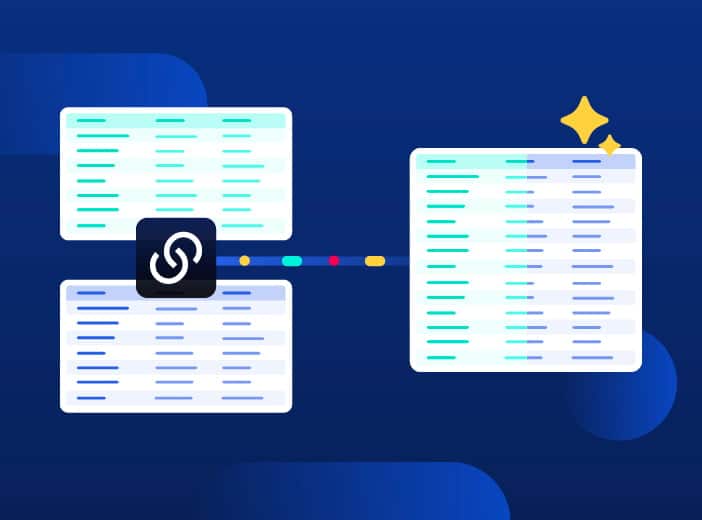Glossary
Data join
Data join involves combining multiple datasets into one, increasing the relevance of data and enabling deeper analysis.
Organizations now have access to a wide variety of datasets from internal systems, open data and from partners and suppliers. Combining these datasets can reveal new insights or create new use cases and innovation. Data join, sometimes called data merging or data blending, is therefore a key part of an organization’s data strategy.
What is a data join?
Data join involves combining multiple datasets into one, increasing the relevance of data and enabling deeper analysis.
Data joining is normally carried out by data experts who take care of standardizing data formats, check data quality or anonymize information if required. A solution like Opendatasoft allows you to perform all these steps thanks to an all-in-one platform.
What are the benefits of data merging?
Data join delivers multiple benefits, allowing organizations to:
- Make better decisions: as information is enriched, it gives deeper, more informed insight that can be used to solve problems or improve existing processes.
- Create new and innovative services: data merging makes it possible to make a dataset meaningful when it was not before. For example, it could provide time or geographical data to give context to monitoring data. This added value allows organizations to create new, innovative services.
- Democratize data for everyone: integrating data with reference datasets allows organizations to create more impactful data visualizations and to provide points of comparison. These steps are essential to make data understandable and useable by all.
How do you integrate data?
Data join is vital to organizations of all sizes. To ensure successful data merging processes organizations should follow these best practices:
- Ensure data compatibility and interoperability: Transform data into a standard format to better combine and exploit it.
- Use the right tools: To simplify data processing and integration, organizations should use tools that can store, collect, format, sort and analyze large amounts of data from a range of solutions and formats.
- Ensure data quality: Before integrating multiple datasets, it is important to ensure that the data is reliable, relevant and high quality. Appointing data stewards responsible for each dataset helps with this process..
- Implement a data governance policy: This provides a framework for the use of data and ensures compliance, security and protection of confidentiality. It is vital that everyone involved with data understands and follows governance policies at all times.
Opendatasoft allows you to integrate multiple datasets in just a few clicks. Moreover, you can directly reuse public datasets available on our Data hub.
3 examples of data join
Data joining delivers benefits across a range of use cases and sectors.
Here are some examples:
- Integrating data with a geographic reference dataset: This is the most common example of data merging. For example, combining data on parking lot occupancy with geographical information allows it to be visualized as an easily-understandable map.
- Integrating B2B customer data with business information/government databases: This allows organizations to add to their data with information such as zip code, workforce, activity, etc. This is an opportunity to enrich customer knowledge with detailed, high-quality information.
- Integrate data from partners with your own database to enrich your knowledge and develop new business opportunities.
Learn more

Blog
Opendatasoft harnesses agentic AI to connect AI models to real-world data, driving greater business impact
What is agentic AI and how does it help increase data consumption? Our Q&A blog explains the current state of AI, and how Opendatasoft is innovating to drive forward its impact for customers.

Blog
Opendatasoft boosts data enrichment, even when using the largest reference sources
Enriching your data is a key step in creating relevant insights and analysis that drives value. However, when it comes to using massive reference sources such as national company databases, detailed weather data or geographic/administrative boundary datato enrich your data, technical limitations often become a challenge.

Blog
Successfully scaling data products – best practice from McKinsey
Data products are central to increasing data consumption across the organization. But how can you ensure your data product program delivers lasting value? We explore the latest best practice from McKinsey, designed to scale data product creation and usage.
